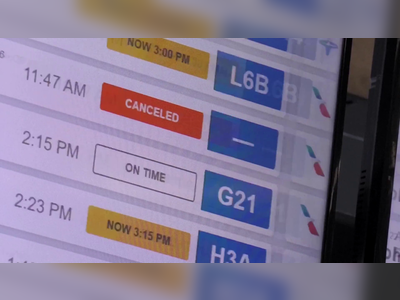
SpaceX Launches Mission to Replace NASA Astronauts at the International Space Station
Falcon 9 rocket embarks on a critical mission to rotate crew members after extended stay of two astronauts.
A SpaceX Falcon 9 rocket successfully launched from Cape Canaveral Space Force Station, initiating a mission to replace two NASA astronauts stranded at the International Space Station (ISS) for an extended period.
The mission, known as Crew-10, is designed to transport a new crew to the ISS and bring the current astronauts back to Earth after their prolonged stay.
NASA astronauts Loral O'Hara and her colleague, who have spent the last nine months at the ISS, are scheduled to depart the station on March 19, shortly after Crew-10's arrival.
This duration marks a significantly extended stay compared to typical missions, which usually last around six months.
The Falcon 9 rocket lifted off at 3:05 PM EDT, carrying a crew of four.
The Crew-10 astronauts are set to conduct various scientific studies and experiments during their time aboard the ISS, ensuring the continued advancement of multiple research initiatives in microgravity.
The Crew Dragon capsule, part of SpaceX's human spaceflight program, has been a vital asset for NASA since its initial crewed flight in 2020. This mission highlights the ongoing partnership between NASA and SpaceX in advancing human space exploration.
NASA officials have emphasized the importance of rotating astronauts to maintain crew health and well-being, particularly after an unforeseen delay that extended their stay beyond typical mission parameters.
The launches and returns of astronauts are critical components of maintaining operations aboard the ISS, which continues to serve as an essential platform for global scientific research.
SpaceX's ability to facilitate crew transfer missions reflects the growing reliance on commercial partners in the realm of space exploration, bolstering international collaboration in scientific endeavors while enhancing capabilities to respond to mission timelines.
The mission, known as Crew-10, is designed to transport a new crew to the ISS and bring the current astronauts back to Earth after their prolonged stay.
NASA astronauts Loral O'Hara and her colleague, who have spent the last nine months at the ISS, are scheduled to depart the station on March 19, shortly after Crew-10's arrival.
This duration marks a significantly extended stay compared to typical missions, which usually last around six months.
The Falcon 9 rocket lifted off at 3:05 PM EDT, carrying a crew of four.
The Crew-10 astronauts are set to conduct various scientific studies and experiments during their time aboard the ISS, ensuring the continued advancement of multiple research initiatives in microgravity.
The Crew Dragon capsule, part of SpaceX's human spaceflight program, has been a vital asset for NASA since its initial crewed flight in 2020. This mission highlights the ongoing partnership between NASA and SpaceX in advancing human space exploration.
NASA officials have emphasized the importance of rotating astronauts to maintain crew health and well-being, particularly after an unforeseen delay that extended their stay beyond typical mission parameters.
The launches and returns of astronauts are critical components of maintaining operations aboard the ISS, which continues to serve as an essential platform for global scientific research.
SpaceX's ability to facilitate crew transfer missions reflects the growing reliance on commercial partners in the realm of space exploration, bolstering international collaboration in scientific endeavors while enhancing capabilities to respond to mission timelines.












